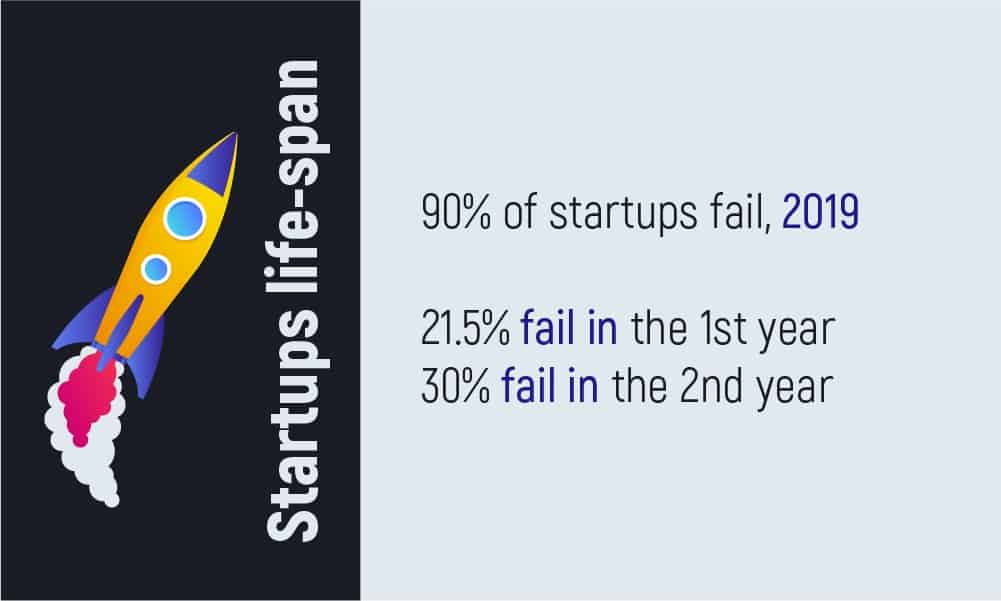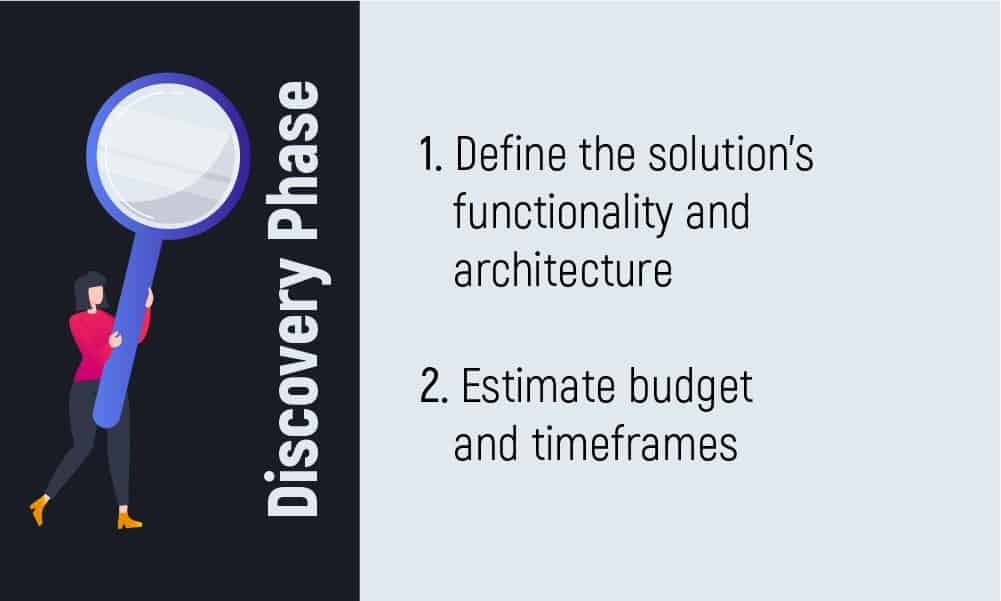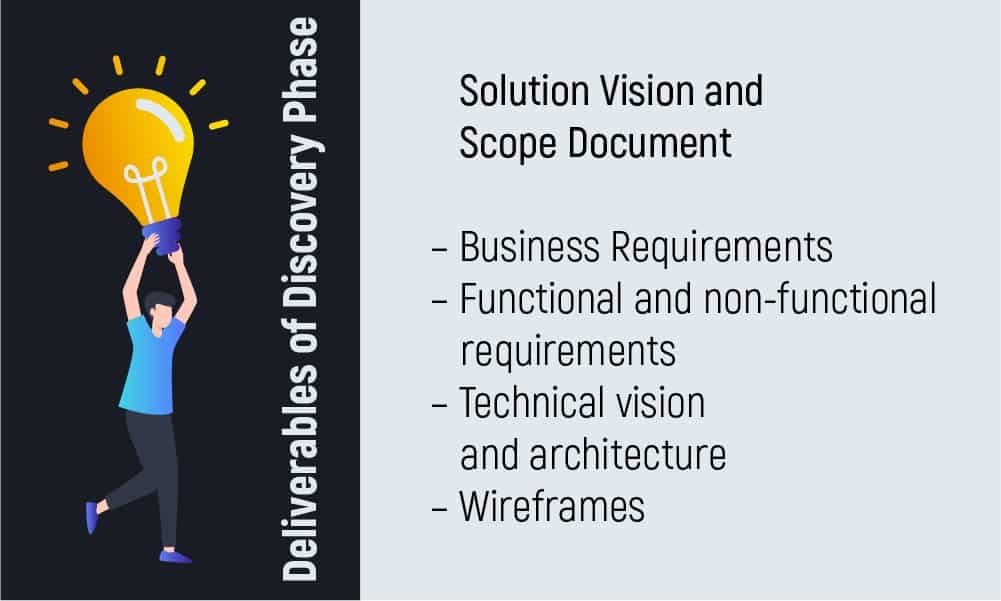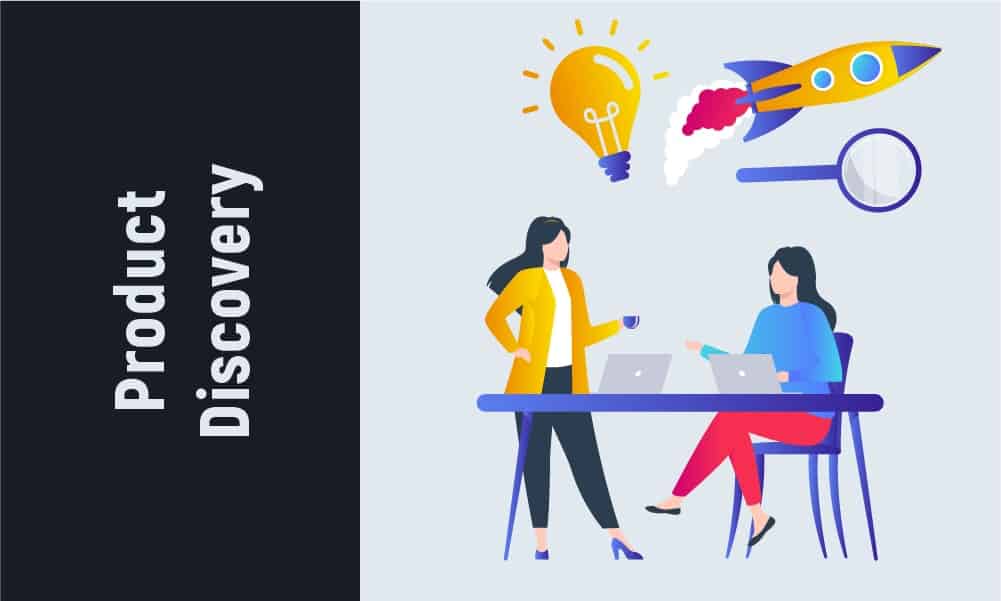The Discovery phase is an initial stage in software development, a professional business analysis of product ideas that results in exact deliverables like documented architecture and requirements specification, defined project scope with clear cost, and time estimation.
The Discovery phase often turns out to be an unknown service for startups, but when being requested brings a lot of benefits, namely improving the solution in a team of experts at cost. That’s why if product discovery is not skipped, it is the first decisive step to achieve 100% project success.
The Discovery phase is valuable as it helps us and our clients align towards the expected solution, discuss all details, all liaisons. It allows viewing the product not only under the functional point of use but from an end-users’ and business perspective altogether.
How Brands Go Global with Their Startup Idea?
In 2019 the percentage of startups that fail reached 90% which means 9 of 10 startups die. For startups to survive during the first and second years is not a piece of cake either: 21.5% fail in the first year and 30% in the second year. What’s the problem? How not fall behind in building a startup?
The first obvious reason is running out of money. It is either lack of investment, paying poor efforts into finding investors, or being on the string budget because of constant re-builds. Does not that lead us to the second reason which is a lack of research?
Startup teams tend to misjudge budget capabilities as well as their understanding of the market, target audience, trends, technologies, etc. “If I have money, what can go wrong?” Targeting an audience based on demographics? Definitely a bad idea. Implementing all trendy features into one solution to make it top-notch? Won’t work as well.
The truth is startups can bloom at minimum budgeting on condition the product team has a clear vision, great product strategy, and passion to constantly search for ideas on how to grow. So, delivering for the wrong market and wrong audience, unpredicted budget risks, scattered architecture, and not only — are the typical problems startups should resolve before jumping to development.
Predicting whether a new business idea is right for a long time is one of the most difficult questions for startups. Camera GoPro was a company shifting from private to public meaning other people could buy its shares — pretty high at the moment they launched their top-notch cameras on the market. Today the company continues to develop, but shares are much lower and customers lost their interest in the product that suddenly boomed and went down.
Delivering mobile-first technology is great, but it is nothing without a team passionate about realizing new ideas and making products victorious in different business niches. The Ukrainian startup RefaceAI targets the global market and even earned unexpected attention from Elon Musk. Though a face-swapping application holds mostly the entertainment part, the founders promote the app as a handy tool for cinema production and film distribution, video game development, and other fields. Keeping a flexible and future-in-mind startup team they choose long-term perspectives over the short-time success that brings money. The team researches software development trends in video development technologies. They get the most of generated ideas and put serious focus on realizing the monetization plan.
Startups That Bloom: Why Customer Discovery and Market Research Value?
Startups should come up with a marketing strategy and consistent project plan to go ahead with it. Describing product vision and compiling requirements plan will be easier with:
- Interviews
- Observations
- Surveys
- Strategies
- Canvas
Researching on your own can be challenging and the moment will come when you realize expert opinion is what you need. The Discovery phase is a stage conducted by technical leaders, software architects, business analysts, UI/UX designers, and engagement managers. The purpose of the Discovery phase in software development projects is to collect maximum information for driving smooth project initiation and taking data-driven decisions. Also, there are such constituents of a Discovery phase as proof of concept in software development, which aims to find out the idea’s feasibility. And, there’s an MVP development. How to develop a minimum viable product? It allows deploying a minimum functional app and adding various features later.
At every Discovery phase, we hear from our clients: “This is a good question we need to think through.” At every Discovery phase, we hear from our team: “Here is an idea! Let’s solve it in the next way…”. Discovery is a powerful synergy since everybody works together as a team ready to deliver value.
Profound customer analysis and market research during this service help startups build the right solution with the right technology tools. Also, the Discovery phase ends with creating a clear project plan including the estimated budget and time.
Learn more about how to validate your startup business idea
Deliverables of Discovery Phase
The Discovery phase is an intensive research period before development. The stage of discovery usually takes from 1 to 2 weeks or several months for large-scale projects. Solution Vision and Scope Document will be compiled at the end of the process and will include:
- Business Requirements. The team analyzes business background, domain, risks, and client’s business needs.
- Functional and non-functional requirements. The team creates and approves the solution’s functional decomposition to cover key business processes in the most efficient way
- Technical vision. The part that refers to the solution’s architecture, technology stack, entity-relationship models, and technical risks.
- Wireframes. Schematic UX of the application detailed to the extension client wants to see it.
Along with the main outcomes which are the solution vision and scope document, we want to note that the value of this stage also includes:
- Validated product ideas and a clear strategy for product development
- Consistent and achievable product roadmap that meets business needs
- Wisely defined product activities that ensure each product detail is known and can be transferred for the development team to implement
- Prepared high-quality UX design and architecture of the solution that allows building MVP
Role of Business Analyst
The business Analyst’s role is vital for software projects. Responsibilities of business analyst during the discovery phase will cover:
- Business analysis
- Business and software requirements specification
If the project manager has to build the product right, the business analyst has to verify we are building the right product. Firstly, the BA specialist analyzes business needs and then identifies whether the solution archives business goals. The expertise and skills of business analysts reach broad horizons. They should know which techniques will suit a particular business case. Business analysis will aim at targeting various data sources to extract the most useful insights. Experts will use the following tools and methodologies to visualize data and present results in an understandable format to the client:
- Roles & Permissions Matrix
- RACI Matrix (responsibility allocation map)
- Use Cases (how users interact with the developed software)
- User Stories (how the functionality works to satisfy the end-user)
- Functional Decomposition and Prototyping for System Capabilities
- Interface Analysis (how software components interact to make interface and system 100% effective)
- Feasibility Analysis (how practical the solution is)
- SWOT Analysis
- Scope Modeling and Root Cause Analysis
- Data Dictionary, Data Flow Diagrams
The technical leader works side by side with the business analyst to analyze solutions, features, and integrations and prepare the best technical stack decision. The technical leader’s task is to verify the scalability and robustness of architecture design. The whole team’s critical task during product research and analysis is ensuring both sides are on the same page. No detail or comment can be missed. As long as a client addresses the software company to conduct research, the team’s greatest devotion will be to understanding clients’ wishes, expectations, and fears.
Expectation management is one of the most crucial principles of our delivery process. A common understanding of how a client envisions functionality, what we should input into a marker of quality, what product architecture we should draw — is all the basis of truly fruitful cooperation with our client. What the client expects and how we understand it is important for the success of all the stakeholders.
Summarizing Benefits of Discovery for Startups
- All information in one document
- Proof of concept by an expert team
- Recommendations and plans on the best delivery approach
- Precise cost and budget estimation
- Code rebuilds and improvements are several times more expensive than paying for the Discovery phase once
- Possibility to get technical specification document and later request its implementation at any software development company
Paying for the Discovery phase and requesting it saves you from rebuilds and failures. The greatest risk in skipping discovery lies in losing your entire project by building the wrong solution. Besides, you reduce the time and costs of the application development as the expert team adds features end-users will need and removes needless ones basing decisions on business analysis.
Firstly, Discovery is always about challenging clients’ minds and setting the questions they never happened to hear, but the answers to which reveal essentials about the future product. Secondly, it’s about challenging the technical team making them find solutions, sometimes extraordinary, for meeting clients’ requirements and end-users needs.
MVP development can be the result of the Discovery phase service. Besides, startups receiving technical specification documents and project scope with an estimated budget can request implementation of the solution at any software company. For product owners, it is a helpful guide to find reliable and highly expert software development partners. The Discovery phase is at cost service, usually short in time that never delays the implementation of business ideas. Instead, it accelerates the development process, eliminating doubts about project functionality. Thus, it helps clients and engineering teams be on the same page. The Discovery phase is important for startups not to build the wrong solution, but to have improvements done before the product goes to the development stage.
Thanks to the activities of the discovery phase, we help clients define: when and where is a starting point for the project to stay within a budget and timeline, what things to keep in mind to avoid future rebuilds. These are what we call expectation management and success story.
Discovery: To Be or Not To Be
How to define whether you need a discovery phase? There is no simple way but to set you the right questions. Try to answer these:
- What problems does the solution solve? What benefits will it create?
- Does the solution meet business needs? Is it profitable? How will it achieve a brand or company’s vision and mission?
- How will people find, use, and interact with the product? What would be the most important touchpoints?
- What will make users stay engaged and never quit the app because of UX, functional features, speed?
- What architecture will provide further product development and ensure effectiveness?
- What is the best choice of tech stack? What OS will it support?
- What would be the development costs? How to reduce production costs not risking the quality of the application?
Don’t feel clear and confident in answering all these questions? We know how challenging it is! Probably, it’s time to get professional business analysis and expert estimation of your business idea. If you have doubts and feel for improvement, you should learn more about the Discovery Phase service and what benefits you will receive with it.
Learn even more about software development for startups. Especially, the software development hourly rate!















